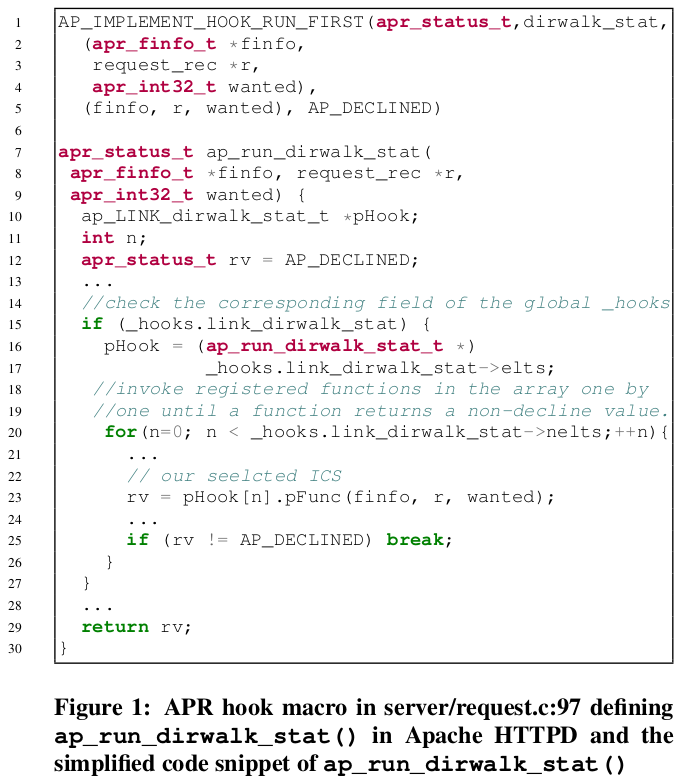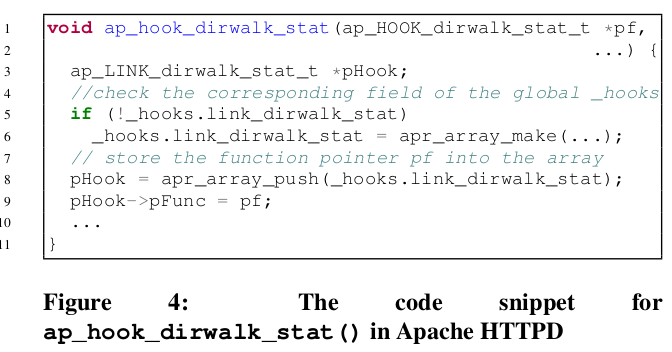Jujutsu
References:
[1] Control Jujutsu: On the Weaknesses of Fine-Grained Control Flow Integrity. CCS, 2015.
A new attack on fine-grained CF that exploit the incompleteness of pointer analysis, when combined with common software engineering practices, to enable an attacker to execute arbitrary malicious code.
Concepts:
- ICS: Indirect Call Site
- ACICS: Argument Corruptible Indirect Call Site
- RCE: Remote Code Execution
- DSA: Data Structure Analysis
- DEP: Data Execution Prevention
- ASLR: Address Space Layout Randomization
- SSP: Stack Smashing Protection
- ROP: Return-oriented Programming
- JOP: Jump-Oriented Programming
Threat Model
The threat model in this paper is a remote attacker trying to hijack control of a machine by exploiting memory vulnerabilities.
Secure Part:
- Fine-grained CFI, with unlimited tags for the forward edge and a shadow stack
- DEP deployed.
- ASLR deployed.
Insecure Part:
- Memory corruption vulnerability exits, which allows an attacker to corrupt certain values on stack or heap.
Exploit Design
Searching ACICS Candidate
Searching among all ICS:
- The forward edge pointer and its arguments that reside on the heap or a global variable.
- The argument at ICS can be altered without crashing the program, before reaching a target function.
- The ICS should be reachable from external input, e.g., a network request.
ap_run_dirwalk_stat() contains pHook[n].pFunc, which invokes a function pointer.
Select Target
Apache HTTPD and Nginx
piped_log_spawn
Exploit




use heap memory corruption vulnerability to corrupt an entry in the
_hooksstructure’slink_dirwalk_statfield to point topiped_log_spawn.use same vulnerability to corrupt the struct in the
request_rec->finfofield such that, when viewed as apiped_logstruct, the fieldsread_fdandwrite_fdare null, and the fieldprogrampoints to a string with the name and arguments of the program we intend to invoke, such as/bin/sh -c ....
Why success with fine-grained CFI?
Short answer: No fine-grained CFI with CFG generated by static analysis.
Long story:
Building control flow graph with static analysis
A precise CFG requires a pointer analysis to determine the set of functions to which the pointer at each indirect call site can point.
Challenges
- Global Struct.
_hooksis a global struct variable in Apache HTTPD. Each filed of it contains an array of function pointers. For example, fieldlink_dirwalk_statcontains an array of function pointers to implementation functions of the functionalitydirwalk_stat. - Customized Container API to manipulate function pointers. The analysis has to capture inter-procedural data flows via customized container APIs. For example, function pointers are stored and manipulated using customized array APIs
apr_array_push(),apr_array_make(). - Macro Generated Code. Those code are structurally similar. This imposes a significant additional precision requirement on the static analysis, as it needs to consider a (potentially) large number of similar functions that can manipulate the data structures inside
_hooks.
Static Analysis Trade-offs
Precise(sound and complete) pointer analysis is undecidable[41], for languages with if statements, loops, dynamic storage, and recursive data structures.
Questions:
Could we restrict the language features in different ways so that the pointer analysis could either be sound, or complete, or decidable?
If you could revise
the fundmental principles of
computer system design
to improve security...
... what would you change?